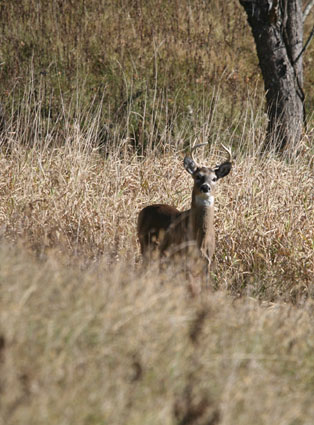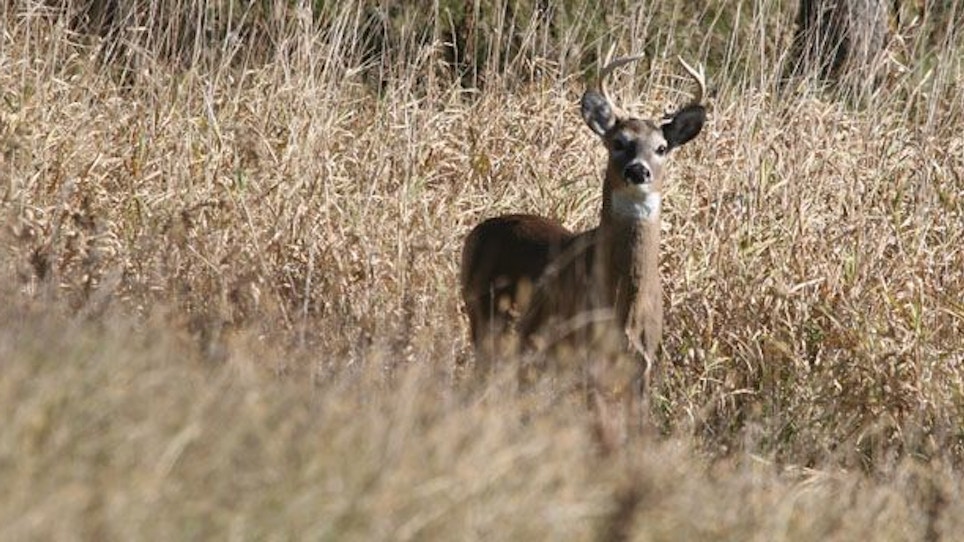 We hear a lot about quality deer management (QDM) today. Some folks think it’s great, while others are convinced it doesn’t work. And the truth is that when implemented properly, QDM works — but there are examples where it hasn’t worked. The question is, why not? The answers will provide you with recommendations to ensure that your QDM program will work. In other words, what do you need to do on your property to give quality deer management the best chance to succeed?
We hear a lot about quality deer management (QDM) today. Some folks think it’s great, while others are convinced it doesn’t work. And the truth is that when implemented properly, QDM works — but there are examples where it hasn’t worked. The question is, why not? The answers will provide you with recommendations to ensure that your QDM program will work. In other words, what do you need to do on your property to give quality deer management the best chance to succeed?
Remember that the objective of QDM is to improve the quality of all deer — does and bucks — and the habitat as well. There are numerous examples of where the strategy of passing up small bucks and button bucks and shooting lots of does has worked to produce bigger bucks and a quality deer herd. I’ll get to several great example of such success at the end of this column, but first let’s consider some examples of where this strategy has not worked.
QDM Gone Wrong
The Crockford-Pigeon Mountain Wildlife Management Area encompasses 17,000 acres in northwestern Georgia. In 1991, the DNR switched from traditional management to QDM (a four-points-on-one-side minimum). In 1997 it switched back to traditional management because there was no improvement in the quality of bucks taken. This experiment seemed doomed from the start because of five consecutive years of a poor acorn crop and a high doe harvest just prior to and after implementation of QDM. All of this led to lower-quality buck harvests rather than the expected increase, and the program was stopped. In addition, there was an unexplained loss of a high number of bucks that never showed up in the harvest.
In 1993 Georgia implemented a QDM program for all of Dooley County. Subsequently, other areas in Georgia implemented QDM, but there was no data to substantiate success. Thus, in 1998 the DNR captured and collared a number of bucks on one area where the minimum legal spread was 15 inches and a second area where the antler restriction was four points on one side. Fifty-six percent of the yearling bucks on the 15-inch area survived to 2 1/2 years of age, and only 47 percent survived on the four-point area. Illegal harvest was 29 percent for yearlings. Though these results are not too bad, they do not compare well to other success stories.
In the early 1990s I conducted a research project where we tried to implement a QDM program on a hunting lease on private land in West Virginia. The 2,000-acre property was owned by a paper company and leased to several families and their friends, about thirty in all. We gave them specific instructions — pass on all bucks with less than four points on a side, increase the doe harvest, and don’t shoot fawns because half of them are bucks. For five years we reiterated these rules at various meetings with club members. We also monitored all kills, but results were poor — we never saw a significant increase in doe body weights or buck antler size.
Why did it fail? Two reasons. The hunters refused to shoot enough does, and they often violated the antler restriction rule. We would often hear a club member say that if he didn’t shoot the small buck that came by, a member of the other family in the lease would. Also, the timber company did not want to introduce a financial penalty for those who shot small bucks. So, small bucks got shot.
I’ve been working with a Pennsylvania hunting club as it tries to improve its herd. We’re in our fifth year and results have been mixed. The first two years I had difficulty convincing club members to pass on small bucks and to increase the doe harvest. However, the sighting of some bigger bucks has now changed all that. Doe harvests are good, and no bucks are harvested that don’t meet the Pennsylvania law in that area (four points on one side). In addition, the club has done a great job with food plots. Though antler size has increased, members still are not harvesting many older bucks, and I’m not sure why. Our plan is to stay the course, and I believe we will see further antler increases.
QDM Success Stories
Antler restrictions can be implemented in two ways — restrict harvest to bucks with a certain number of points on one side (usually four), or restrict harvest to bucks with a minimum inside spread (ear-to-ear spread is used; in the North that would be 16 inches, in Texas, 13 inches). The problem with using a point restriction is that you might harvest your best yearling bucks. A quality yearling might have eight points, but if you use four points on a side as your restriction, those bucks might get killed.
Data shows that using ear-to-ear-spread restrictions protects a lot more quality yearling bucks, and there are success stories to back this up. QDM was implemented with a seven-point minimum at the 3,300-acre Chesapeake Farms in eastern Maryland in 1994. Doe harvest was also increased, and 23 antlered bucks and 120 does were harvested from 1994 to 1996. In 1997 managers went to a 16-inch-outside-spread minimum. From 1997 to 2000, the buck harvest was 31 and doe harvest was 144. Before QDM, 58 percent of all harvested bucks were yearlings. After the spread rule was implemented, only 14 percent of harvested bucks were yearlings. Spread restrictions work. Oh yes — the harvest of bucks older than 3 1/2 years jumped from 22 to 54 percent.
But the biggest success story using the spread antler restriction took place in Texas. The Texas Parks and Wildlife Department implemented a 13-inch-spread minimum for six counties in 2002. At the same time, it conducted extensive, voluntary education programs so that hunters could better identify legal bucks in the field. Prior to 2002, 52 percent of the legal buck harvest was composed of yearlings and only 16 percent were bucks at least 3 1/2 years old. Three years later, the yearling harvest was only 14 percent and the 3 1/2-year-and-older buck harvest was 32 percent. This experiment worked so well that in 2007 it was expanded to 61 counties. And get this: Last year the harvest of bucks more than 4 1/2 years of age was 39 percent of the total buck harvest. Inside spread works when hunters follow the rules.
That’s the key to whether you can have success with QDM on your property. Do whatever it takes to ensure hunters follow the rules. If hunters continue to shoot small bucks, develop a fine system, with proceeds going into the food plot development account. Make it a stiff fine that has some teeth. Encourage higher doe harvests, and make sure hunters only shoot doe fawns. Consider using ear-to-ear spread as the antler restriction and develop an educational program to ensure that hunters know the difference between legal bucks and those they should let walk. Do these things, and you can watch your doe and buck quality improve rather quickly.






